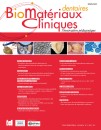Despite the rise of minimally invasive bonded partial restorations, the 360-degree preparation of a natural tooth as a prosthetic abutment is still a « traditional » procedure that is still one of the most common activities of prosthodontists; the main indication today being the replacement of existing crowns [1, 2]. So, is it relevant to talk about crown preparation techniques again, since the basic principles of crown preparation are known and have been widely published for more than 70 years? Probably, if we remember that the principles of prosthodontics have always been related to the choice of prosthetic material [3-6]. In this respect, the appearance of a new dense ceramic called zirconia has opened up new possibilities for less invasive crown preparations [7]. In this context, the type of finishing lines has been the subject of extensive and lively discussions between researchers and leading clinicians, both prosthodontists and periodontologists [8-11]. The purpose of this article is not to add to the controversy, but rather to provide a pragmatic 10-point overview of the possibilities for reducing the invasiveness of full-crown preparations by combining a vertically finished peripheral preparation with a post-free fiber-reinforced composite abutment and zirconia as the prosthetic material.
1. Cemented or adhesive dentistry?
The use of a resin-based material as a luting material has overcome the strict geometric retention principles of the conventional cemented prosthesis [12]. In this case, retention is primarily related to adhesion to the dental tissue and the prosthetic material, rather than to simple geometric friction. Nevertheless, bonding to the prosthetic material assumes its ability to be roughened, with adhesive retention being primarily micromechanical. Prosthetic materials such as composite or glass-ceramic have thus been widely used for this purpose, as their surface is easy to roughen, by sandblasting and/or acid etching, the resulting adhesion…








